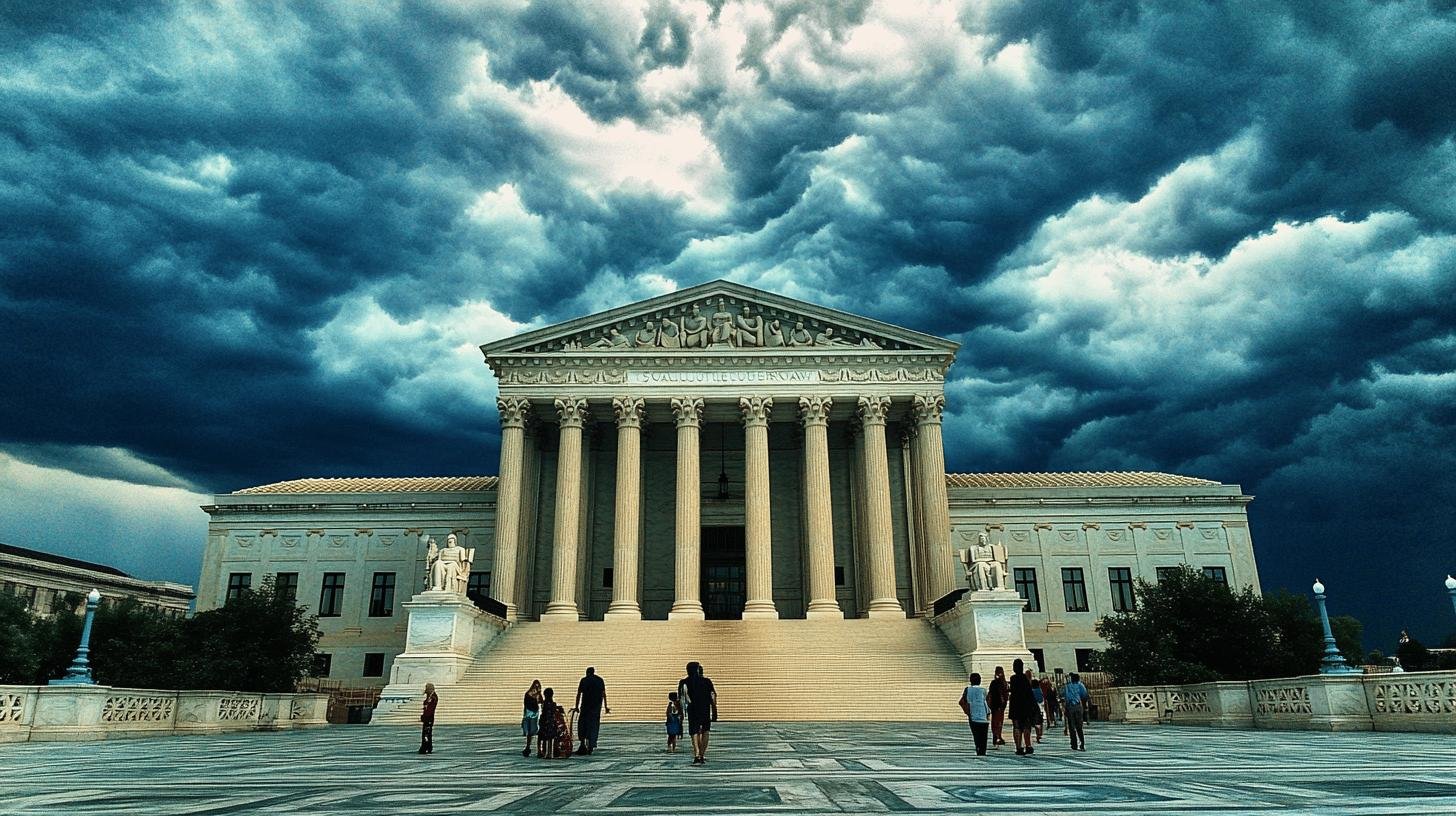TL;DR:
- Hiring quotas based on demographics are generally illegal under U.S. federal law.
- Title VII of the Civil Rights Act of 1964 prohibits discrimination in hiring based on race, color, religion, sex, or national origin.
- EEOC enforces rules against hiring quotas and supports diversity without compromising fairness.
- Affirmative action promotes equal opportunity without mandatory quotas.
- Key court rulings:
- Regents of the University of California v. Bakke (1978): Struck down strict quotas.
- Grutter v. Bollinger (2003): Allowed race as a factor in admissions.
- Companies should regularly review diversity policies, avoid rigid quotas, use racial data cautiously, and seek legal advice to comply with laws.
Is your company breaking the law with hiring quotas? That’s a million-dollar question. While promoting diversity is important, hiring quotas can land companies in hot water. Federal laws, such as Title VII of the Civil Rights Act, prohibit employment discrimination. But how do hiring quotas fit into this? Let’s break it down.
Understanding the Legality of Hiring Quotas in the US
Hiring quotas, which require a set number or percentage of hires from specific demographic groups, are generally illegal under U.S. federal law. Such practices can lead to discrimination against those not in these categories, violating employment laws.
Title VII of the Civil Rights Act of 1964 prohibits employment discrimination based on race, color, religion, sex, or national origin. This law is enforced by the Equal Employment Opportunity Commission (EEOC). Title VII ensures hiring practices are fair and based on merit, not demographics. Quotas can lead to reverse discrimination, also illegal under this law.
EEOC Enforcement Actions Against Hiring Quotas:
- Issued guidelines prohibiting quota use in hiring.
- Investigated companies setting specific demographic hiring numbers.
- Enforced penalties against organizations using quotas.
- Provided resources to help employers comply with anti-discrimination laws.
- Supported court cases ruling against hiring quotas.
The EEOC emphasizes that while promoting diversity is essential, it should not compromise fairness and meritocracy. They advocate for diversity initiatives that comply with federal laws and avoid specific demographic targets.
Distinction Between Affirmative Action and Hiring Quotas
Affirmative action aims to improve opportunities for historically marginalized groups but does not set mandatory hiring numbers. It focuses on equal opportunities without imposing numeric targets.
Regents of the University of California v. Bakke

In the 1978 Regents of the University of California v. Bakke case, the Supreme Court ruled strict quotas unconstitutional, violating the Equal Protection Clause of the 14th Amendment. However, the court allowed race as one factor in college admissions, permitting some forms of affirmative action.
Key Supreme Court Rulings on Affirmative Action:
- Regents of the University of California v. Bakke (1978): Struck down strict quotas but upheld race as one admission factor.
- Grutter v. Bollinger (2003): Allowed race as a factor to promote diversity in admissions.
- Fisher v. University of Texas (2016): Supported the use of race in admissions under strict scrutiny.
- Parents Involved in Community Schools v. Seattle School District No. 1 (2007): Limited race usage in public school assignments.
Affirmative action plans must be narrowly tailored and temporary, aiming to eliminate specific instances of past discrimination. Regular reviews ensure these plans do not become permanent fixtures, keeping them as tools for fairness without crossing into quota usage.
Federal and State Laws Governing Hiring Practices
Federal laws like Title VII of the Civil Rights Act of 1964 prevent employment discrimination based on race, color, religion, sex, or national origin. This ensures hiring practices are fair and merit-based, making quotas generally illegal under federal law.
State regulations can vary but often mirror federal laws. Some states offer additional protections and stricter anti-discrimination rules. For instance, California’s Fair Employment and Housing Act (FEHA) extends protections to sexual orientation and gender identity. States like Texas and Florida emphasize merit-based hiring, discouraging mandatory hiring quotas.
Overview of Key Laws:
| Law | Federal/State | Key Points |
| Title VII of the Civil Rights Act | Federal | Prohibits employment discrimination based on race, color, religion, sex, or national origin. |
| Equal Pay Act | Federal | Requires equal pay for equal work, regardless of gender. |
| California FEHA | State | Extends protections to sexual orientation and gender identity. |
| Texas Labor Code Chapter 21 | State | Emphasizes merit-based hiring, prohibiting quotas. |
Employers should consult legal experts to develop diversity policies that align with these laws.
Recent Supreme Court Rulings Impacting Hiring Quotas

The recent Supreme Court ruling against affirmative action in higher education has raised concerns about the legality of DEI initiatives in companies. This decision underscores the court’s stance that strict quotas are unconstitutional. While promoting diversity, it cannot undermine fairness and merit-based selection.
The Supreme Court acknowledges that all individuals, even white males, can face discrimination. This complicates DEI initiatives, requiring companies to avoid any discriminatory practices. The legal landscape around hiring quotas and DEI initiatives remains complex, needing a balance between promoting diversity and adhering to anti-discrimination laws.
Practical Guidelines for Legal Diversity Initiatives
Reducing legal risks is crucial for companies implementing diversity initiatives. One strategy is to minimize using racial data that could pose legal challenges. This ensures compliance with anti-discrimination laws while addressing workplace bias.
Maintaining DEI progress is important. Companies should not abandon effective practices due to legal fears. Instead, they should take actions to uphold DEI while staying within legal boundaries, such as regularly reviewing policies to align with current laws.
Dos and Don’ts for Legal Diversity Initiatives:
- Do conduct regular reviews of diversity policies for legal compliance.
- Don’t implement rigid quotas mandating specific demographic targets.
- Do use racial data cautiously to minimize legal risks.
- Don’t let legal fears halt effective DEI practices.
- Do seek continuous legal advice to navigate complex laws.
Seeking legal advice helps companies identify potential pitfalls and ensure diversity initiatives are both effective and lawful. This proactive approach promotes a fair and inclusive workplace while avoiding legal issues.
Conclusion
In summary, hiring quotas are generally illegal under U.S. law. Title VII of the Civil Rights Act and rulings by the Supreme Court clearly establish that while promoting diversity is important, it must be done without setting mandatory hiring numbers. Affirmative action, when done legally, promotes fairness but does not impose quotas. Companies can still foster a diverse workforce by following best practices and ensuring compliance with both federal and state laws.
Hiring quotas are not a lawful solution, but thoughtful, inclusive policies can help businesses remain both ethical and legal.
FAQ
Are hiring quotas legal in the United States?
No, hiring quotas are generally illegal. Federal laws like Title VII of the Civil Rights Act prohibit discrimination, and the EEOC discourages quotas as they can lead to reverse discrimination.
What’s the difference between hiring quotas and affirmative action?
Hiring quotas set specific demographic targets, which is illegal. Affirmative action promotes equal opportunities by considering factors like race or gender without setting fixed quotas.
How can companies promote diversity without violating the law?
Companies can focus on fair hiring practices, set diversity goals without hard quotas, offer training, and regularly review policies to ensure compliance with anti-discrimination laws.
What are the risks of using hiring quotas?
Hiring quotas can lead to legal issues, including fines and investigations by the EEOC. They may also result in claims of reverse discrimination.
What are the key laws governing hiring practices in the U.S.?
Key laws include Title VII of the Civil Rights Act, the Equal Pay Act, and state laws like California’s FEHA and Texas Labor Code Chapter 21, which all discourage the use of hiring quotas.

